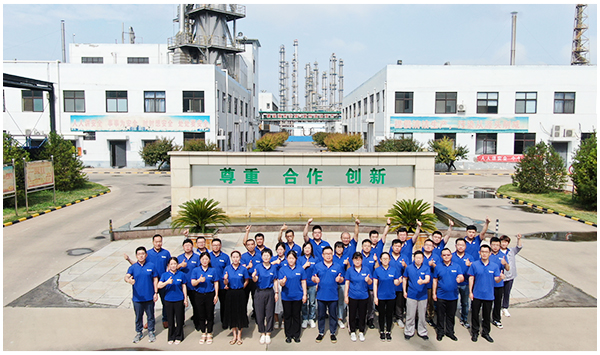
News
Oct . 13, 2024 01:18 Back to list
Liquid Fertilizer for Enhanced Plant Growth with Chelated Iron Nutrients
The Importance of Chelated Iron Liquid Fertilizer for Plant Health
Iron is an essential micronutrient that plays a critical role in plant growth and development. It is involved in processes such as photosynthesis, respiration, and nitrogen fixation. However, despite its significance, iron often becomes deficient in many soils, particularly in alkaline conditions where it forms insoluble compounds that plants cannot absorb. This challenge has led to the increased use of chelated iron liquid fertilizers, which provide a solution for gardeners and farmers struggling with iron deficiency in plants.
What is Chelated Iron?
Chelated iron is a form of iron that has been chemically bonded with an organic molecule, creating a complex that prevents the iron from reacting with other elements in the soil. This bonding process increases the bioavailability of iron, allowing plants to absorb it more easily. The term 'chelation' comes from the Greek word chele, meaning claw, which describes how the chelating agent grips the iron ion tightly, holding it in a form that plants can access.
There are several types of chelating agents used in the production of chelated iron fertilizers, including EDTA (ethylenediaminetetraacetic acid), EDDHA (ethylenediamine-N,N'-diacetic acid), and DTPA (diethylenetriaminepentaacetic acid). Each of these agents has different characteristics, affecting the pH range at which iron can be effectively delivered to plants.
Benefits of Chelated Iron Liquid Fertilizers
1. Enhanced Mobility One of the primary advantages of chelated iron is its improved mobility in the soil. Unlike traditional fertilizers, chelated forms do not precipitate out and become unavailable to plants. As a result, they remain in a soluble state, enabling better absorption by plant roots.
2. Quick Action Chelated iron liquid fertilizers provide rapid results. They can quickly alleviate iron chlorosis, a condition characterized by yellowing leaves due to inadequate iron. Plants receiving chelated iron show noticeable improvements within days or weeks.
3. Versatility in Application Due to their liquid form, chelated iron fertilizers can be easily mixed with water for foliar sprays or included in irrigation systems. This versatility makes them ideal for both landscape use and agricultural practices.
chelated iron liquid fertilizer

4. Compatibility with Other Nutrients Chelated iron can be used in conjunction with other fertilizers, enhancing overall nutrient uptake by plants. This synergistic effect can improve plant health and increase yields.
How to Use Chelated Iron Liquid Fertilizers
Using chelated iron fertilizers effectively requires knowledge of your specific plant needs and soil conditions. Here are some essential steps to follow
- Soil Testing Before applying chelated iron, conduct a soil test to determine the pH level and existing nutrient concentrations. This information will guide you on the correct type and amount of fertilizer to apply.
- Application Rates Follow the manufacturer's recommendations for application rates. Generally, it is better to err on the side of caution, applying smaller doses more frequently rather than one large application.
- Timing The best time to apply chelated iron is during the growing season when plants actively uptake nutrients. Early spring or late summer can be ideal times for application.
- Foliar Application For immediate results, foliar application is effective. Spray the solution directly onto the leaves, ensuring even coverage. It is often best done early in the morning or late in the afternoon to minimize evaporation and leaf burn.
Conclusion
Chelated iron liquid fertilizers are invaluable tools for gardeners and farmers looking to ensure optimal plant health. By providing iron in a readily available form, these fertilizers address the common issue of iron deficiency that many plants face, particularly in alkaline soils. With proper application techniques and a thorough understanding of plant needs, chelated iron can promote vigorous growth, improve plant vitality, and ultimately lead to a flourishing garden or more productive agricultural output. For anyone serious about plant care, incorporating chelated iron into your fertilization regimen could mean the difference between struggling plants and thriving crops.
-
Polyaspartic Acid Salts in Agricultural Fertilizers: A Sustainable Solution
NewsJul.21,2025
-
OEM Chelating Agent Preservative Supplier & Manufacturer High-Quality Customized Solutions
NewsJul.08,2025
-
OEM Potassium Chelating Agent Manufacturer - Custom Potassium Oxalate & Citrate Solutions
NewsJul.08,2025
-
OEM Pentasodium DTPA Chelating Agent Supplier & Manufacturer High Purity & Cost-Effective Solutions
NewsJul.08,2025
-
High-Efficiency Chelated Trace Elements Fertilizer Bulk Supplier & Manufacturer Quotes
NewsJul.07,2025
-
High Quality K Formation for a Chelating Agent – Reliable Manufacturer & Supplier
NewsJul.07,2025
